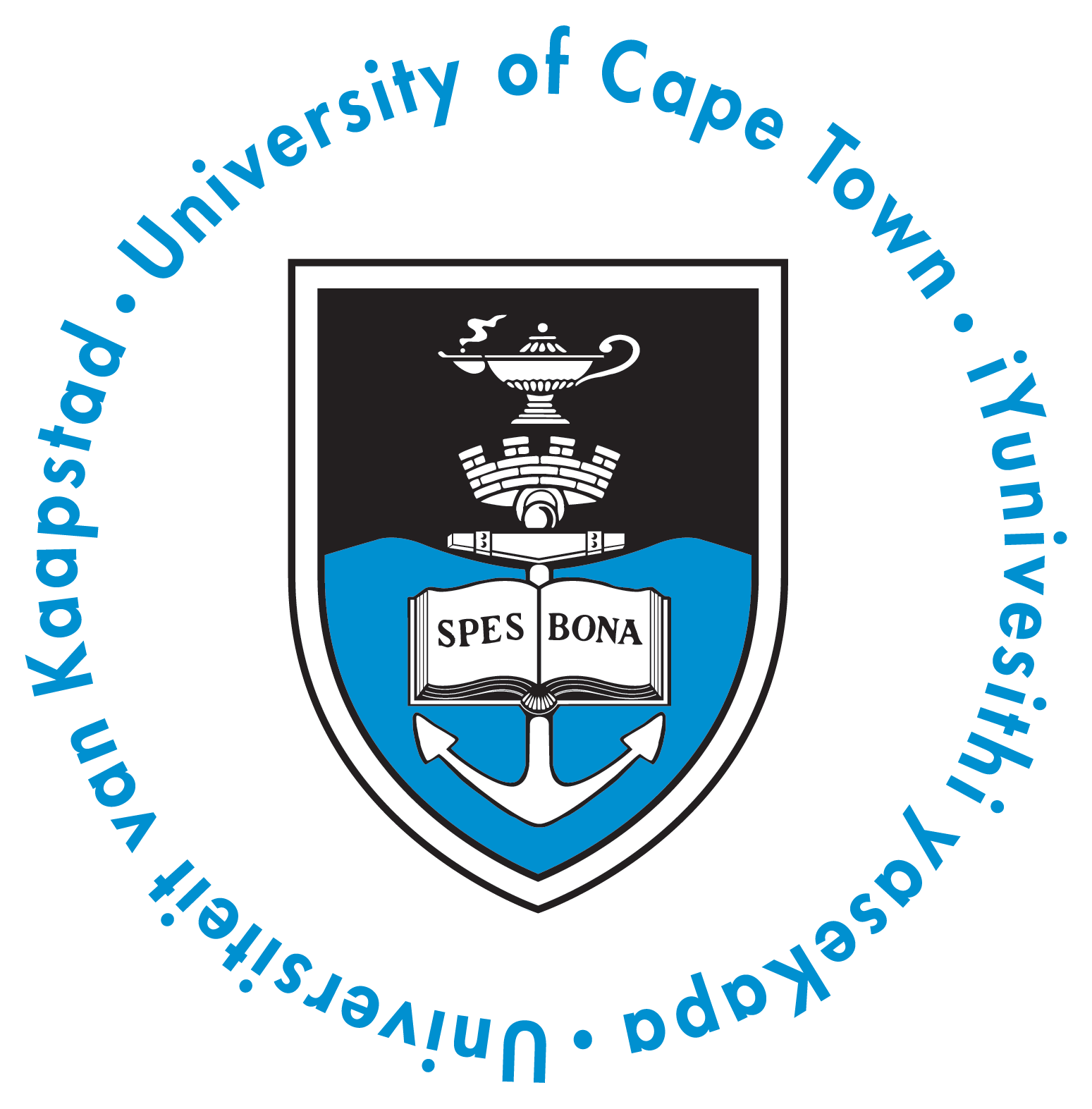Timeline of Jewish life in Malmesbury, 1880s to 1980s
A hundred years of Jewish life in Malmesbury in the Swartland
1745: The parish of Swartland in the Western Cape province (66 kilometres northeast of Cape Town and 50 km northwest of Paarl) was founded by the Dutch Reformed Church.
1829: The town was given its name by the Governor of the Cape, Sir Lowry Cole, who was the son-in-law of the Earl of Malmesbury in England. In 1896 it became a municipality. The area is renowned for its wheat production. Malmesbury is the headquarters of Bokomo, the oldest milling company in the country, established in 1919. There are vineyards, dairy, sheep and poultry farms, a cheese factory and fruit processing plants. There are two nature reserves in the area at Kalbaskraal and Riverlands.
1880s: Jewish traders or smouse are believed to have visited the town. Many, mainly Lithuanians and some Latvians, are known to have settled in Malmesbury between 1881 and 1905. The earliest families were the Wyners, trading in hardware and grain; Resnicks from Kupishok, who were speculators and dairy farmers; Beinarts from Dvinsk, Latvia, who became salt pan owners; and Abraham Bayer who was a produce buyer. Tobias Kretzmar, from Birzh in Lithuania, arrived as a smous in 1901 and became a general dealer by 1903. These men were part of the first minyan and set up and managed the first Hebrew Congregation. They were ardent Zionists and also had a long and fruitful association with the local Afrikaans farming community.
1895: The first minyan is thought to have been set up.
1900: The first 'Malmesbury Hebrew Congregation' was formed with Mr B Krafchik as the first president. An attempt to acquire a cemetery failed.
1905: The community celebrated a Siyum Hatorah – the arrival of a Sefer Torah – at the home of Mr Sugarman, who had paid for it to be written and gave it on loan to the congregation.
1906: Building a synagogue: the congregation started collecting money for a synagogue. Max Goldman drew up the plans for the building, situated on 1 Prospect Street.
1907: Talmud Torah established. At first classes were held in private homes. They later transferred to the synagogue building.
1911: The foundation stone for the synagogue was laid on 11 November 1911 by Abraham Katz and Benjamin Olswang. The words 'How Goodly are Thy Tents O Jacob' are inscribed in Hebrew on the archway above the front door. Architecturally the synagogue is a fine example of an eastern European synagogue. It is double volume with a ladies' gallery at the back upstairs. The facade has a centrally placed front door and teak windows rounded at the top. It is topped by an ornate Cape Dutch Revival gable with a Magen David on a roundel.
1912: The synagogue opened and was consecrated by the Rev A P Bender of the Cape Town Hebrew Congregation on 16 May 1912. The gilt key presented to him on the occasion was on display at the Cape SA Jewish Board of Deputies.

1920: A mikvah was built at the back of the synagogue. Ticket holders had to pay a shilling to use the bath. (Is the small building at the back the mikvah maybe?)
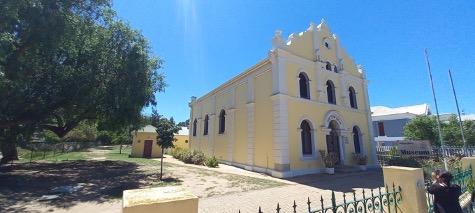
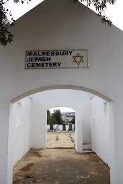
1920s: A cemetery was eventually acquired. A local farmer, Piet van der Westhuizen, generously donated a piece of his farm, Rozenberg, for the cemetery. He left a servitude on a suitable piece of ground just inside the fence of his farm to the Jewish community, with the proviso that 'this land is always to remain for the Jews'. He also contributed to the cost of the Tahara House and to the wall around the cemetery. He was always a good friend to the Jews and contributed generously with livestock and money to Zionist funds. He was later presented with an illuminated address by the Jewish community to thank him for his ongoing support, which he proudly hung in the entrance to his farmhouse. A smous, Joseph Chorn, was the first person to be buried there.
1922: Rev Efron arrived. He served the community for 20 years. With a synagogue, a minister, a mikva and a cemetery, the Malmesbury Jewish Community of over 50 families flourished, enjoying a stable and rich Jewish life, as in the old country. There were daily minyanim, Shabbat services, Yom Tovim, cheder and kashrut. The town was the regional centre for Jewish life and for the High Holy Days the congregation would be augmented by Jews who travelled in from nearby villages such as Mamre, Darling, Kalbaskraal and even Piquetberg. All Jewish businesses closed for the Holy Days.
1926: Malmesbury sent five delegates to attend the Zionist Congress in Cape Town.
1930s: The Hebrew school had 28 pupils and they collected funds to build a dedicated Talmud Torah and Communal Hall with a stage that could seat 400 people. The Malmesbury community was flourishing, with a Jewish Burial Society, Jewish Helping Hand Society, Zionist Association, Women’s Zionist Society, Jewish Ladies’ Benevolent Society, Union of Jewish Women, Junior Maccabean Society, Maccabean Association which ‘fostered the aims of Judaism and Zionism’, and an Orphan Aid Society to support Oranjia. Zionist bazaars were held in the Town Hall. The Joodse Basaar with the unusual Joodse kos and delicatessen was well patronised by the gentile inhabitants.
1935: Advocate Morris Alexander laid the foundation stone of the Communal Hall on 14 April 1935. It was officially opened in 1938 by the mayor of Cape Town, Mr Louis Gradner. The ceremony was attended by other officials from Cape Town and surrounding areas including the distinguished Rabbi Mirvish. But the writing was already on the wall. Jews were leaving the town. Ten years later, by late 1940, only one pupil remained.
1935/36: Antisemitism did not bypass Malmesbury. Weichard and his Greyshirts held meetings there attracting 400 people on at least three occasions in 1936, attracting 600 people at the last one. Dr Donges (later state president) and Dr Verwoerd (later Prime Minister) spoke against Jewish immigration at a protest meeting. In a 1943 election speech, National Party candidate for Malmesbury, M S Loubser, harangued about strangers from overseas who were making huge profits and buying up fixed properties while Afrikaner blood was flowing up north.
1941: It was still just possible to get a minyan for chagim, but the community was fast dwindling. As realists, they decided to sell the Talmud Torah Hall to a Mr Bloch.
1971: There were only four families left in 1971 and it was decided to dissolve the Malmesbury Hebrew Congregation. Its assets were taken over by the Jewish Board of Deputies and the contents of the synagogue – including the bimah, four Sifrei Torah, Aron Kodesh, pulpit and benches – were transferred to Herzlia School’s synagogue Minyan Yosef through the efforts of Bennie Resnick.
1974: On 29 April 1974, the Malmesbury synagogue was deconsecrated. Dr Leon Goldman (son of founder member Max Goldman) purchased the building and transferred it to the then Malmesbury Municipality with the proviso that it be used for cultural purposes only. They decided to convert the synagogue into a museum.
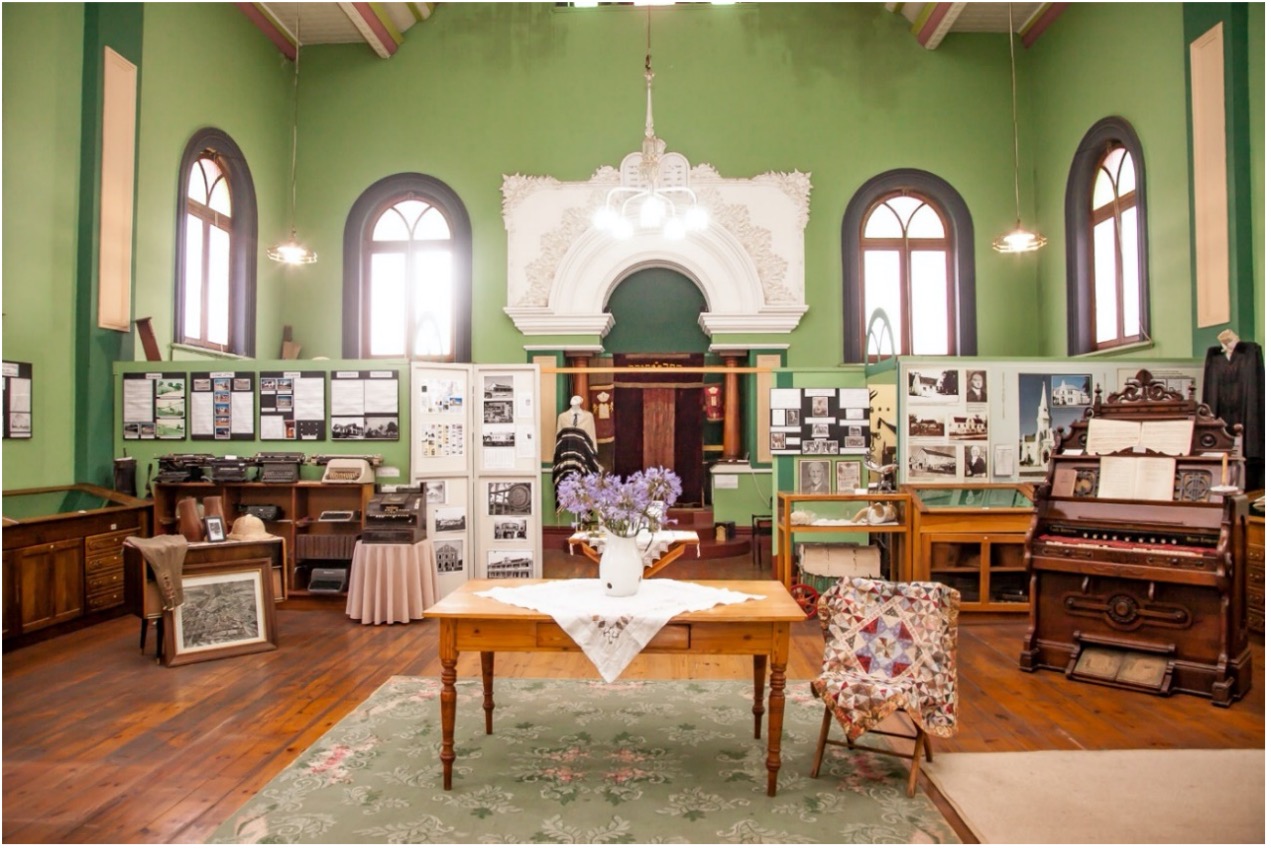
1991: The Ohel Jacob Synagogue at 1 Prospect Street, Malmesbury, was opened as the town museum. Dr Julius Kretzmar, who was born and raised in Malmesbury before studying medicine in Edinburgh and practicing with his brother Noel in Kimberley and who was by then retired and living in Cape Town, was called in to help the curator supplying stories and pictures of the history of the Jewish community. A special section was created near the Aron Kodesh to honour and memorialise the Jewish community who had lived and thrived there alongside their Afrikaans neighbours for nearly 100 years.
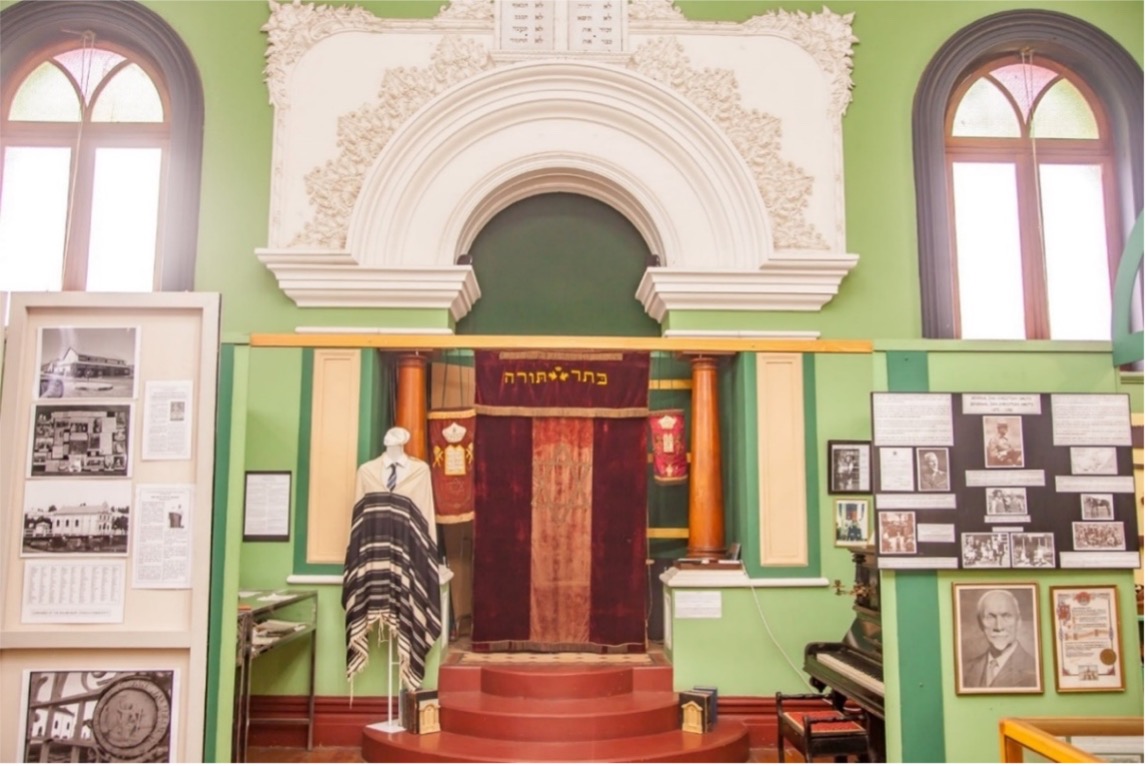
The museum has a leaflet documenting the history of the Jews of the town and an explanation of various items, ceremonies and festivals. It includes the story of Tobias Kretzmar (Geraldine Auerbach’s grandfather) and his shop in Main Street.
1994: The Malmesbury Museum was designated a heritage site and has been well cared for and well maintained.
The Talmud Torah Hall had become a supermarket and the cemetery was badly vandalised. Some of the money from the sale of the Talmud Torah was used to restore the cemetery, repair sixty graves and the Tahara house. The cemetery was rededicated and descendants of Piet van der Westhuizen attended the ceremony and offered to maintain the cemetery, which was on their farm.
1996: There was only one Jewish family left in Malmesbury.

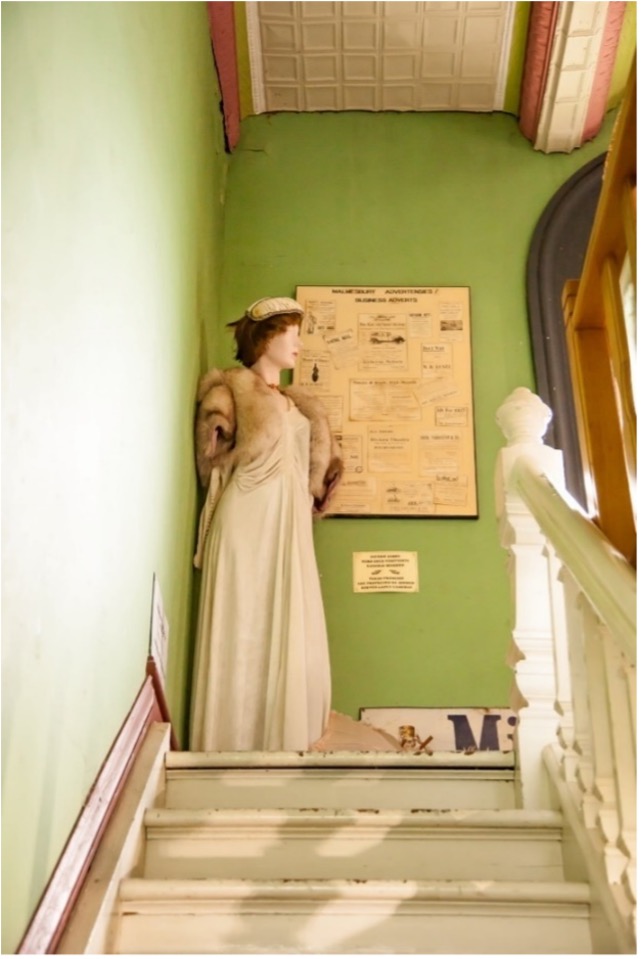
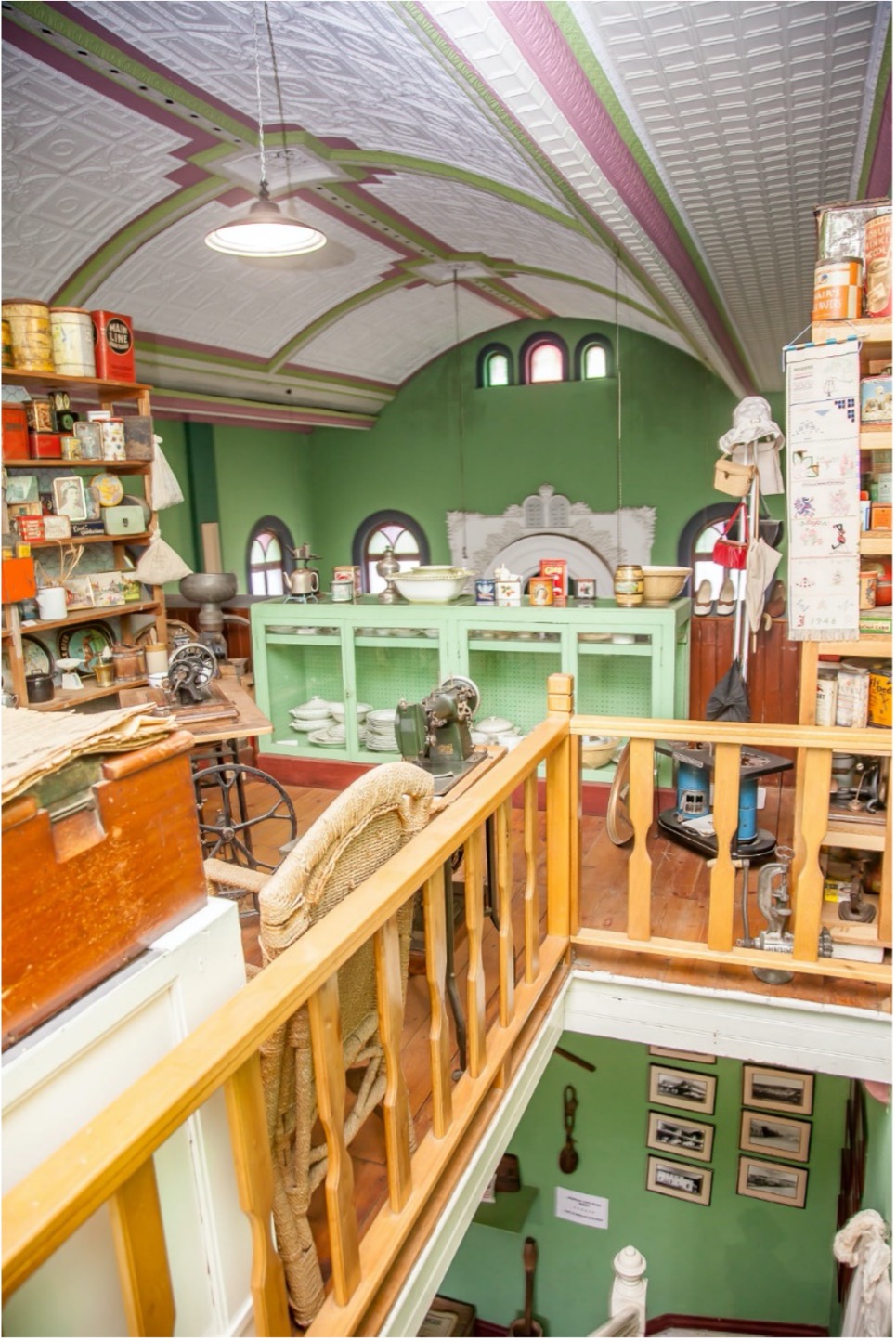
Looking back towards the main entrance we see the ladies’ gallery at the back (above). Stairs going up to the ladies' gallery (left). The ladies’ gallery as it is in the museum today (below left).
Timeline compiled by Geraldine Auerbach, London, May 2023
Pictures of the synagogue as it is today as the Malmesbury Museum, courtesy of the museum


